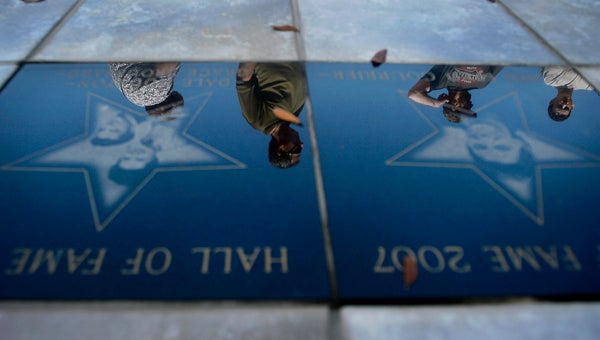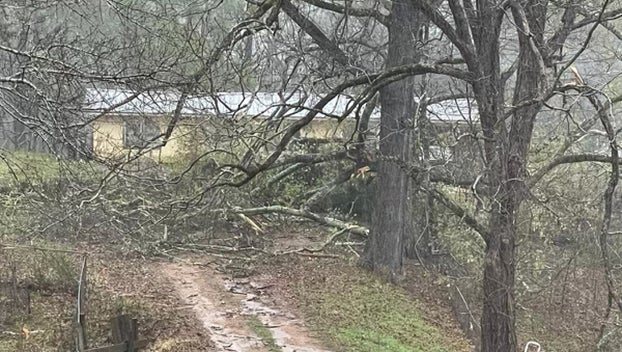Gulf healing, still hurting after spill
Published 12:06 am Wednesday, April 20, 2011
NEW ORLEANS (AP) — It was the catastrophe that seemed to crush a way of life, an oil rig exploding in the darkness and plunging the Gulf Coast and its people into months of chaos.
One year after the nation’s worst offshore oil spill began, solemn ceremonies will mark the disaster Wednesday and underscore the delicate healing that is only now taking shape. Oil still occasionally rolls up on beaches in the form of tar balls, and fishermen face an uncertain future.
But traffic jams on the narrow coastal roads of Alabama, crowded seafood restaurants in Florida and families vacationing along the Louisiana coast attest to the fact that familiar routines are returning, albeit slowly.
“We used to fuss about that,“ said Ike Williams, referring to the heavy traffic headed for the water in Gulf Shores, Ala., where he rents chairs and umbrellas to beachgoers. ”But it was such a welcome sight.”
Although life is getting back to normal, many questions linger: Will the fishing industry recover? Will the environment bounce back completely? Will an oil-hungry public ever accept more deep-water drilling?
“It seems like it is all gone,” said Tyler Priest, an oil historian at the University of Houston. “People have turned their attention elsewhere. But it will play out like Exxon Valdez did. There will be 20 years of litigation.”
On Tuesday, the federal government reopened the last of the waters that were closed last year after the massive spill, about 1,040 square miles near the sunken rig. And fresh revelations from a BP engineer’s email exchanges with his wife highlighted the missteps made on the ill-fated rig before the explosion.
In the months since the April 20, 2010, blast aboard the Deepwater Horizon, an administrator has handed out $3.8 billion from a $20 billion claims fund set up by BP. The number of cleanup workers went from 48,000 at the height of the spill to 2,000 today.
Most scientists agree the effects “were not as severe as many had predicted,“ said Christopher D’Elia, dean at the School of the Coast and Environment at Louisiana State University. ”People had said this was an ecological Armageddon, and that did not come to pass.“
Still, biologists are concerned about the spill’s long-term impact on marine life.
“There are these cascading effects,” D’Elia said. ”It could be accumulation of toxins in the food chain, or changes in the food web. Some species might dominate.“
Meanwhile, accumulated oil is believed to lie on the bottom of the Gulf, and it still shows up as a thick, gooey black crust along miles of Louisiana’s marshy shoreline. Scientists have begun to notice that the land in many places is eroding.
For example, on Cat Island, a patch of land where pelicans and reddish egrets nest among the black mangroves, Associated Press photographs taken a year ago and compared to those taken recently show visible loss of land and a lack of vegetation.
“Last year, those mangroves were healthy, dark green. This year they’re not,” said Todd Baker, a biologist with the Louisiana Department of Wildlife and Fisheries. Land is eroding on sites where the oil has killed vegetation.
Confidence in Louisiana’s seafood is eroding, too.
“Where I’m fishing it all looks pretty much the same,” said Glen Swift, a 62-year-old fisherman in Buras. He’s catching catfish and gar in the lower Mississippi River again. That’s not the problem.
“I can’t sell my fish,” he said. “The market’s no good.”
But the BP spill has faded from the headlines, overtaken by the tsunami and nuclear disaster in Japan, unrest in the Middle East and political clashes in Washington.
“Nationally, BP seems like a dim and distant memory,” said Douglas Brinkley, a Rice University historian. But the accident will have long-lasting influence on environmental history, he said.
A presidential commission and an internal BP report concluded that the disaster was caused by a cascade of technical and managerial failures, including a faulty cement job. A testing firm hired by the government concluded that the key device used for preventing blowouts failed because of a design problem that prevented it from cutting through pipe.
Fresh revelations from a BP drilling engineer who worked on the blown-out well shed some new light on the jitters and missteps overtaking the ill-fated facility in the weeks before the explosion.
Brian Morel first gained national attention when he referred to the Macondo as the “nightmare well” in an email to a colleague revealed by lawmakers last summer. Last week, the AP obtained additional email exchanges between Morel and his wife, including one in which he said his team at the company was “out of control.”
“I can’t take it, so I am staying away from the issues today,” he wrote.
In a performance review a few weeks earlier, Morel had been told to “be aware of cynicism and criticism of company policies, actions, processes, etc. Don’t be a victim.”
Morel’s wife, who also worked for BP, told him he was smart not to challenge some decisions. “They can live with the consequences if they are poor,” she said.
The Deepwater Horizon was different from the two other major offshore spills in American history — the Santa Barbara blowout in 1969 that led to the creation of the Environmental Protection Agency and the Exxon Valdez. But BP’s disaster was a “seminal moment … seared on the American imagination forever,” Brinkley said.
The BP gusher, caught by the “spillcams” a mile under the sea and delivered nightly to American living rooms, made oil, and its nasty nature, very real.
“It was a huge wake-up call for other treasured landscapes not to become a Gulf of Mexico,” Brinkley said. “So the true historical impact may be in places like arctic Alaska, the Chesapeake, offshore Washington, places that have been contemplating offshore drilling.“
Added Priest: “It made oil visible to Americans. We know we consume oil. In our subconscious, we know that is what fuels our economy and our society. But we never see it.“
For 85 days — from the time the Macondo well began leaking until it was finally capped after a series of failed attempts — Americans got a crash course in deep-water drilling: They learned about blowout preventers, well casings, top kills and top hats, toolpushers and the difference between an oil platform and an oil rig. They learned about where oil comes from and how toxic, or relatively benign, it can be.
In that time, 206 million gallons of oil — 19 times more than the Exxon Valdez spilled, or enough to fill three-quarters of the Empire State Building — spewed from the well. In response, the nation commandeered the largest offshore fleet of vessels since D-Day, and BP spent billions of dollars to clean up the mess and save itself from collapse.
The blast also killed 11 rig workers, including Gordon Jones, an engineer killed when the rig exploded. Jones left behind a 2-year-old son and a baby he never met.
“I know other people have experienced losses like this. The difference I guess is that we’re reliving it essentially every day,“ said Jones’ brother, Chris. ”I don’t think I’ve picked up the newspaper in the last year where there hasn’t been an article about one part of this disaster.“
For the most part, the damage was eventually contained.
“If you come out and see the progress, you’d think so too,“ said Mike Brewer, a Plaquemines Parish oil spill response supervisor, reached Tuesday by telephone as he worked in Bay Jimmy, the hardest hit marsh area where oil remains in a thick crust along the marsh edge.
Brewer, who has spent 25 years cleaning up spills in Louisiana, said this spill was the Big One that he always feared. But was it the last spill ever?
“You expect sooner or later it will happen. And sooner or later, I believe it will happen again,“ he said. ”You need the industry to continue to produce, to continue to drill, and you just need more cautionary measures. You just can’t cut corners.”
Wednesday also marks the final day to file some legal claims against rig owner Transocean Ltd., which is the focus of a trial next year to determine the company’s liability for the disaster.
For now, the fishing communities of the Gulf Coast are praying for a good spawning season and a good catch — exactly as they had hoped a year ago before the Deepwater Horizon blew up.
Swift, the catfisherman, will be putting out nets when the anniversary dawns in the hope of supplying some fish for the local Cambodian-Americans, who are celebrating their New Year.
He said fishermen are getting by, thanks in large part to money from BP, which has helped assuage the pain of the spill, allowing poor and often homeless fishermen to buy trailers, boats and other gear.
“I made the most I’ve ever made. And I’m sure there were a lot of others the same,” Swift said. “I had to pay $10,000 in tax.”
With the $65,000 he received last year — working on the cleanup for BP and getting $12,000 in compensation for the loss of his livelihood — he bought a boat, a 21-footer, and two motors.
Will Americans get over the image of that BP gusher fouling the Gulf? Swift wonders.
“A lot of people think it’s a dirty place,” he said. “The oil has given it a bad name. I was at one of these seafood chains, and they advertised their shrimp as being fresh and ’Pacific.’“






